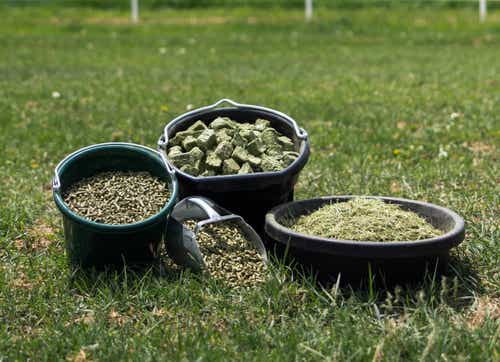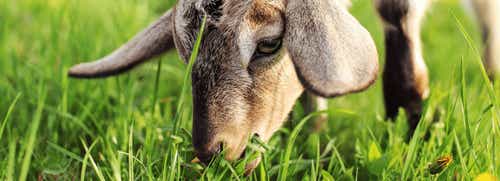
3 Nutritional Disorders to Consider When Feeding Goats
Goat ownership has risen over the past several years – people are keeping small groups of goats as pets, milk producers or as companion grazing animals (great at eating poison ivy and other invasive plants). Before purchasing goats, there are some basics about their digestion we must understand, as well as several nutritional disorders that can easily be avoided with the correct management.
Goats are ruminant animals that rely on fiber (hay, pasture, forage pellets, and forage cubes) to provide most of their nutrition. Goats have a digestive system that is filled with billions of naturally occurring beneficial bacteria and protozoa. These microbes ferment plant fiber and produce energy and other useful nutrients that fuel these animals. The digestive system is also home to harmful bacteria such as E. coli and salmonella. The delicate balance between beneficial and harmful bacteria can be easily disturbed.
Three common nutritional disorders seen in backyard herds are the following:
Thiamine Deficiency
High levels of grain in the diet and stress are associated with thiamine deficiency (polioencephalomalacia). Thiamine (vitamin B1) is made by the normal bacteria in the rumen. Kids or does on high carbohydrate diets (sweet feed) may have an upset in normal rumen flora. A change in bacterial types may cause either a deficiency of thiamine or production of an enzyme which inhibits thiamine activity. The animals appear drunk, may not be able to stand, become blind and slowly die. There is often a dramatic response to a large dose of thiamine (5 milligrams per pound), which may need to be repeated. These diseases can be best prevented by increasing the grain level in the diet slowly (if you are adding grain) and maintaining at least 50-percent forage in the diet. Feeding premium quality forage to goats with high nutritional needs instead of high amounts of grain will reduce the risk of this disorder occurring significantly.
The Merck Veterinarian Manual. (2006). Polioencephalomalacia: Introduction (cerebrocortical necrosis). Whitehouse Station, NJ: Merck & Co., Inc
Acidosis
Acidosis in goats is related to either feeding high levels of grain or a rapid increase in the level of grain in the diet, often coupled with a lack of effective fiber in the diet. Acidosis is associated with the production of high levels of lactic acid in the rumen from a large supply of starch that the animal consumed. Toxins may also be produced by ruminal bacteria that exacerbate the problem. Symptoms include reduced feed intake, panting, diarrhea, reduced cud chewing and kicking at the belly, or other signs of discomfort.
The key to preventing acidosis is a balanced diet that provides adequate forage. An average goat will eat roughly 3-4% of its bodyweight per day. Therefore, a 100 pound goat will eat about 3 to 4 pounds of total food per day (including forages). As a rough rule of thumb, a 100 pound goat should receive a maximum of 1 to 1.5 pounds of grain or commercial feed per day to help avoid digestive problems.
Braun, U., Rihs, T., Schefer, U. (1992) Ruminal lactic acidosis in sheep and goats Veterinary Record 130, 343-349.
Urinary Calculi
Bucks and wethers are prone to urinary tract blockage due to urinary calculi (stones). The most common type are calcium carbonate and struvite (magnesium phosphate) from high grain diets. The calculi often have the appearance of sand. The male urethra is narrow and long. At the end of the penis is the urethra process. Sand may become blocked anywhere but most frequently is at the urethral process. The incidence of urinary calculi in goats tends to increase in late fall and winter, possibly due to decreased water intake and increased urine concentration. Plenty of fresh, palatable water should always be available. Diets high in potassium should be avoided. Vitamin A requirements should be met by supplying good quality green forage and pasture.
Nwaokorie EE, Osborne CA, Lulich JP. Risk factors for calcium carbonate urolithiasis in goats. J Am Vet Med Assoc 2015;247:293–299.
The common feeding mistake with all of these disorders is feeding too much grain and not enough fiber. Providing premium quality forage will decrease or eliminate the need for grain and, therefore, decrease the risk of these nutritional disorders. Learn more about the high-quality forage products provided by Standlee at https://standleeforage.com/products.
By Dr. Tania Cubitt
Standlee Nutritional Expert








